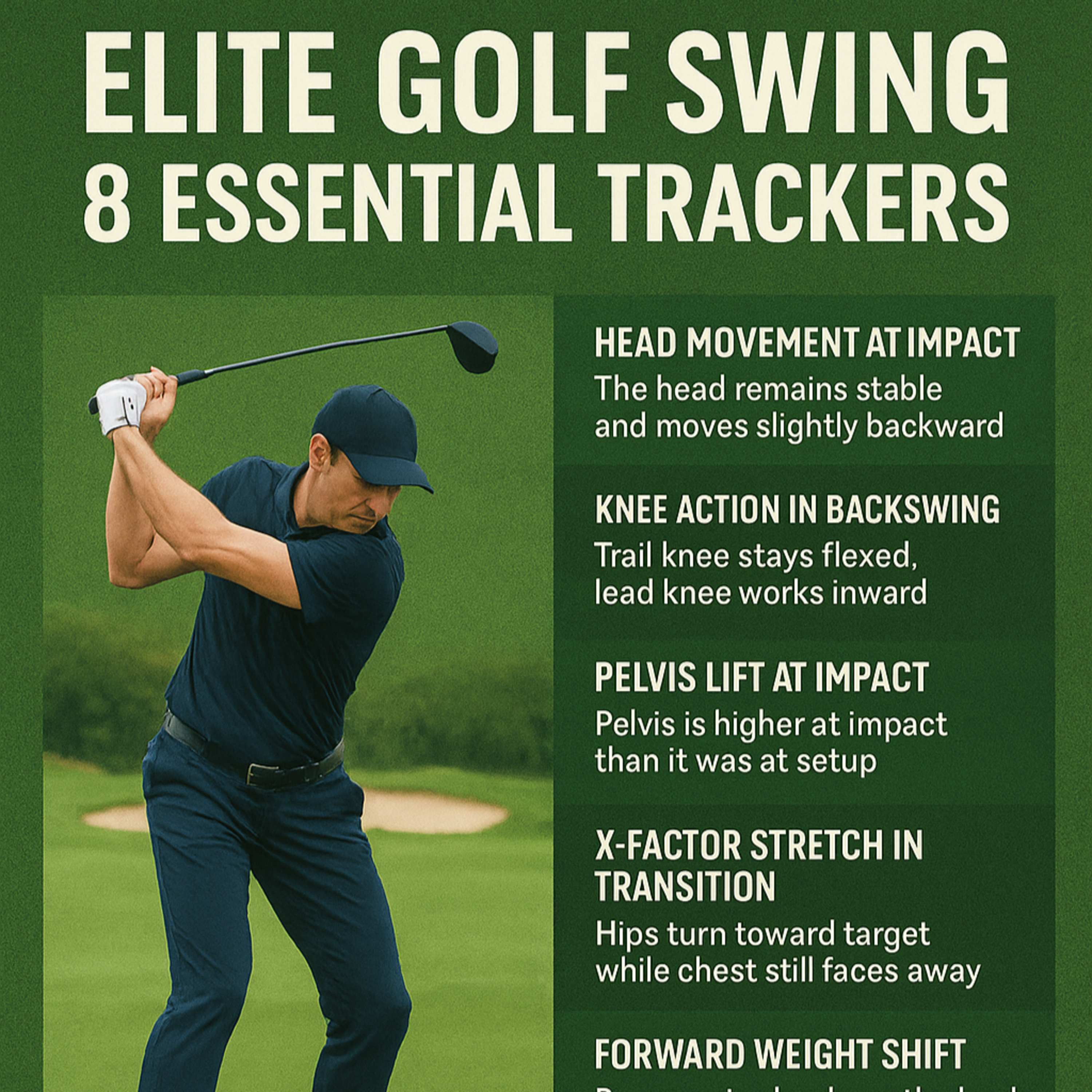#318 Elite Golf Swing: 8 Essential Trackers
- Author
- Golf247.eu
- Published
- Sun 17 Aug 2025
- Episode Link
- https://podcasters.spotify.com/pod/show/puttin-pro/episodes/318-Elite-Golf-Swing-8-Essential-Trackers-e36uajb
In modern golf instruction, a small set of movement patterns separates elite players from amateurs. Known as the “100% Trackers”, these eight essentials are not matters of style but universal, measurable fundamentals seen in every top golfer. They form a practical checklist for coaches and players to anchor swing analysis and training.
Head Movement at Impact
The head remains steady and shifts slightly backward through strike. This protects posture, stabilizes the low point, and ensures eyes stay trained on the ball long enough for a compressed hit. Cue: “Keep your eyes behind the ball until your right shoulder passes under the chin.”
Knee Action in the Backswing
The trail knee stays flexed and stable while the lead knee works inward. This loads pressure into the trail leg and sets the stage for a powerful, sequenced transition.
Pelvis Lift at Impact
At impact, the hips are higher than at setup. This upward push against the ground signifies proper use of ground forces, helping manage strike quality and club speed.
X-Factor Stretch in Transition
Elite swings create separation: hips begin turning toward the target while the chest stays back. This stores elastic energy and releases speed at the most effective moment.
Forward Weight Shift
By impact, pressure is clearly on the lead side. This shift stabilizes the strike, ensures ball-first contact with irons, and allows the clubface to square through impact.
Lead Arm Extended at Impact
The lead arm stays long and firm. This extension maintains radius and face control, producing centered strikes and tighter ball flights.
Forward Shaft Lean (Irons)
Elite players deliver irons with the hands ahead of the clubhead. Forward lean compresses the ball, reduces loft, and guarantees a descending strike.
Kinematic Sequence
Speed builds from the ground up: hips → chest → arms → club. This chain ensures efficient energy transfer and peak velocity precisely at the ball.
Coaching Application
The 100% Trackers provide a structured roadmap for improvement. Players should film swings from both face-on and down-the-line views, then score themselves on the eight checkpoints. Rather than chasing all at once, focus on one or two limiting factors—such as weight shift or shaft lean—and attach a single, clear cue to each. Slow, deliberate rehearsal helps transfer new movement into feel.
For coaches, the key is discipline: protect the X-Factor stretch by resisting early arm pull, emphasize ground forces to support pelvis lift, and always verify strike checkpoints with irons.
These eight trackers are not optional add-ons; they are the universal DNA of great ball-striking. By training them systematically, golfers move closer to the consistency, direction, and speed that define the elite game.
